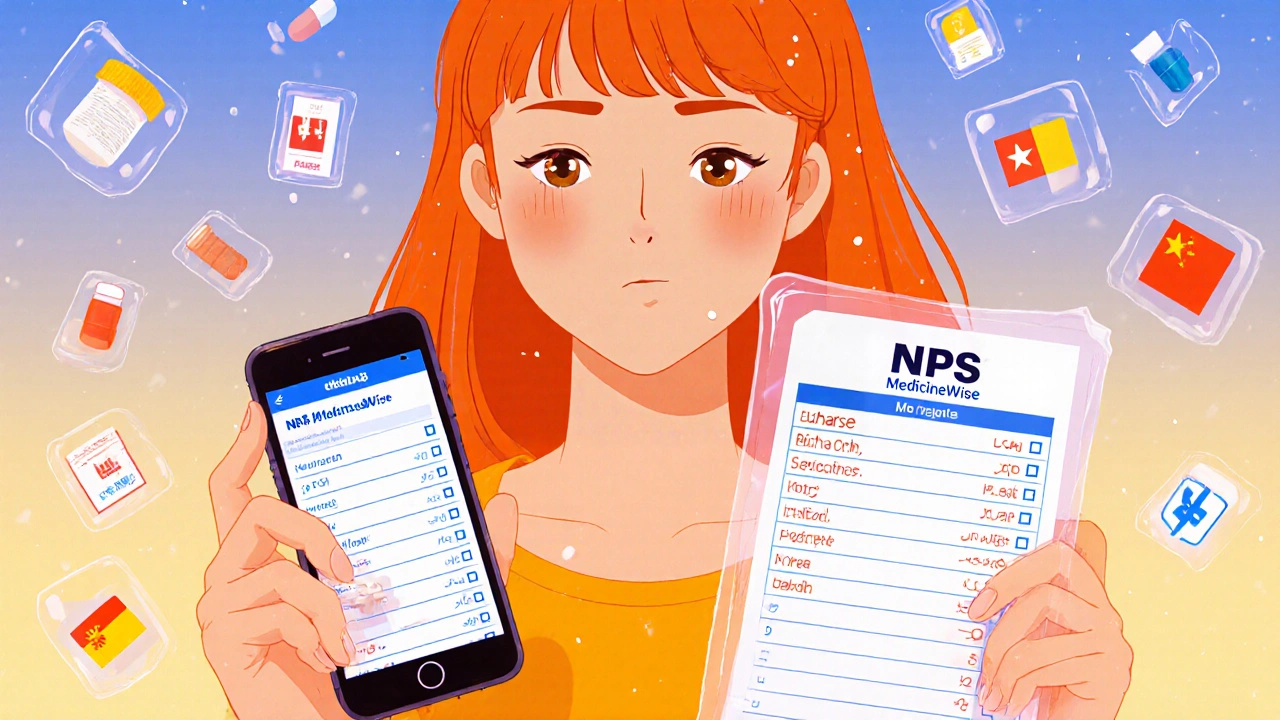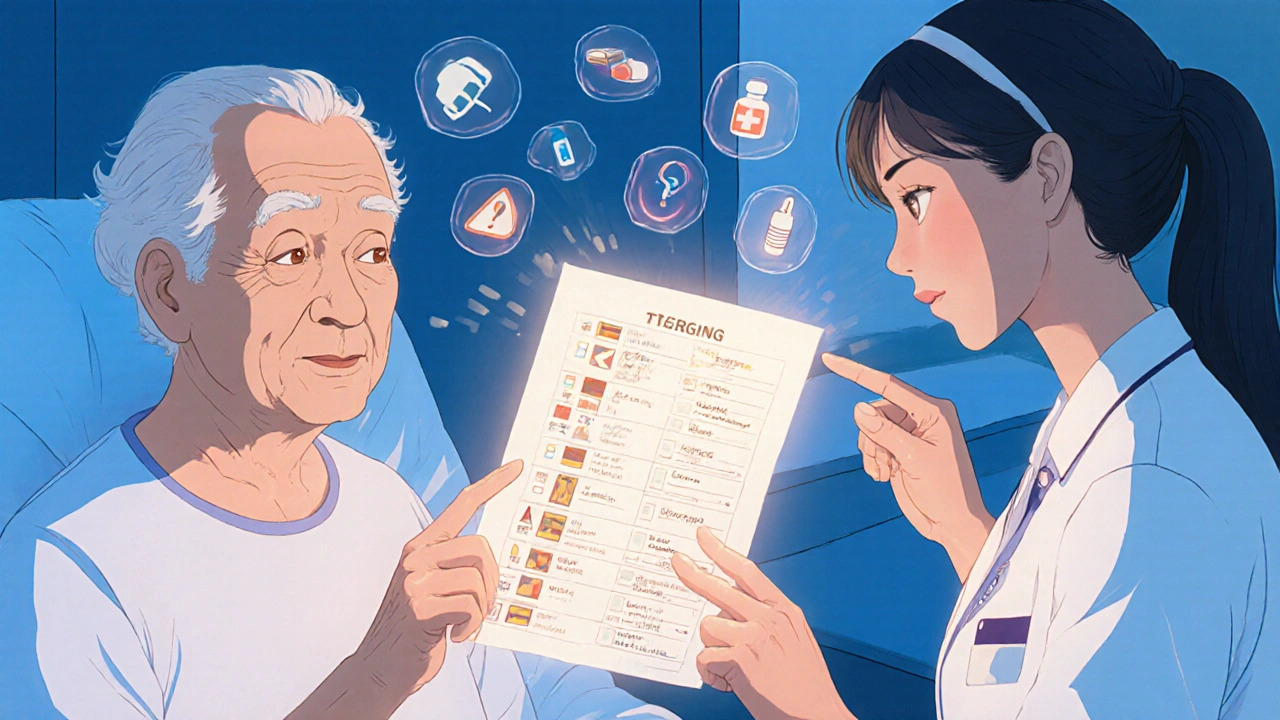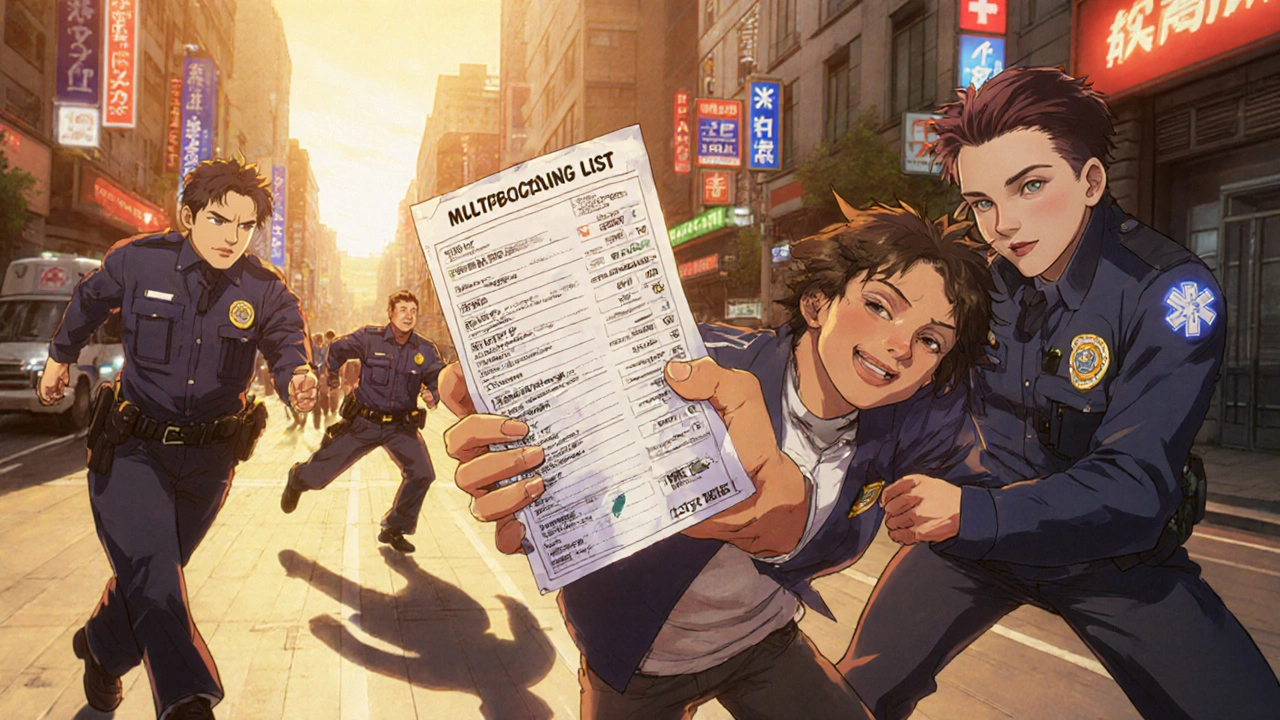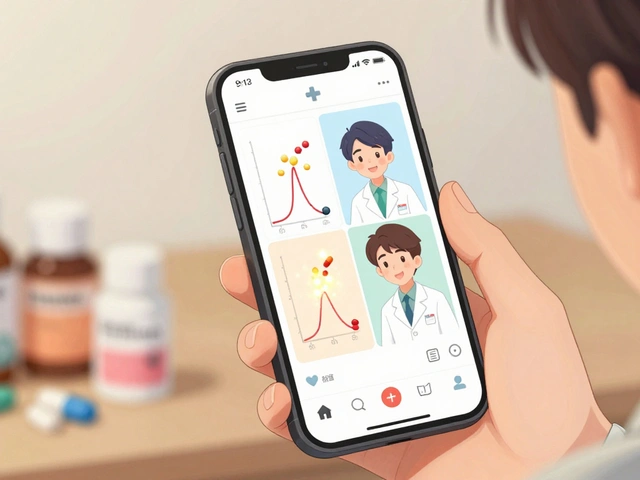Imagine you’re on a trip abroad. You suddenly feel dizzy, your chest tightens, and you can’t speak clearly. The paramedics arrive. They ask what medications you’re taking. You try to explain-but they don’t understand your language. This isn’t a rare scenario. Every year, thousands of travelers and immigrants face life-threatening delays in emergency care simply because they can’t communicate their medication history. A simple, well-prepared multilingual medication list can change everything.
Why a Multilingual Medication List Matters
When you’re in a medical emergency, you might be too sick to talk. Or you might not speak the local language. In those moments, a printed or digital list of your medications becomes your voice. Studies show that language barriers increase medication errors by up to 50% and extend emergency room visits by 22 minutes on average. Those extra minutes can mean the difference between recovery and tragedy.
For example, a 2020 study in JAMA Internal Medicine found that patients who brought a multilingual medication list to the hospital had 28% fewer errors in their medication records. That’s not just a statistic-it’s a real person avoiding a dangerous drug interaction, a missed allergy, or a wrong dose.
This isn’t just for tourists. Millions of people worldwide live in countries where their native language isn’t the primary one. In the U.S. alone, over 25 million people have limited English proficiency. In Australia, where over 300 languages are spoken, even a simple heart pill like warfarin can be misunderstood if the label isn’t in the patient’s first language.
What to Include on Your List
A good multilingual medication list isn’t just a copy-paste of your prescription bottle. It needs to be clear, complete, and easy for a healthcare worker to read in under 30 seconds. Here’s what you must include:
- Medication name (both brand and generic, if different)
- Dosage (e.g., 10 mg, 5 mL)
- Frequency (e.g., once daily, every 8 hours)
- Purpose (e.g., “for high blood pressure,” “for diabetes”)
- Prescribing doctor’s name and contact
- Start date (when you began taking it)
- Allergies (especially penicillin, sulfa, or NSAIDs)
- Supplements and herbal products (many people forget these-gingko, turmeric, or traditional remedies can interact dangerously with prescription drugs)
Don’t just list “aspirin.” Write “Aspirin 81 mg daily for blood thinning.” Don’t say “vitamins.” List “Vitamin D 2000 IU daily.” Details save lives.
Where to Get Reliable Multilingual Templates
You don’t need to translate this yourself. Several trusted organizations offer free, professionally translated templates in multiple languages. Here are the most reliable ones:
- NPS MedicineWise (Australia): Offers a printable Medicines List in 11 languages, including Arabic, Chinese (Simplified and Traditional), Hindi, Korean, Persian, Punjabi, Spanish, Tamil, and Vietnamese. Available as a free app for iOS and Android. The app also sends dose reminders and lets you store photos of your prescriptions.
- Tennessee Pharmacists Association (UML): The Universal Medication List is available in 10 languages: English, Spanish, Chinese, Vietnamese, Korean, Arabic, Russian, Somali, Nepali, and French. It’s designed for use in U.S. hospitals and pharmacies and is used by over 4,500 pharmacists.
- MedlinePlus (U.S. National Library of Medicine): Provides drug information and medication guides in over 40 languages. While it doesn’t have a fillable form, you can print their medication fact sheets and handwrite your details next to them.
- British Red Cross Emergency Phrasebook: Not a medication list, but a lifesaver in emergencies. It includes phrases like “I am taking…” and “I am allergic to…” in 36 languages. Keep this in your wallet alongside your list.
For travelers, the NPS MedicineWise app is the most practical choice. It works offline, syncs across devices, and even lets you add photos of your pills. You can print a copy and carry it in your passport holder.
How to Translate Your List Accurately
Google Translate won’t cut it. Medical terms like “hypertension” or “anticoagulant” don’t always translate directly. Many apps use literal translations that confuse patients from different regions. For example, “blood thinner” in Chinese might be translated as “thin blood,” which sounds like a folk remedy, not a prescription drug.
Here’s how to get it right:
- Start with a trusted template (like NPS or TPA) in your language.
- Use the official translation from one of the sources above-don’t rely on community translations.
- If your language isn’t covered (e.g., Hmong, Karen, or Oromo), contact your local community health center. Many have bilingual staff who can help you create a custom version.
- Ask a pharmacist to review your translated list. Pharmacists are trained to spot translation errors that could cause dosing mistakes.
Also, don’t forget dialects. Mandarin and Cantonese are both Chinese, but their medical terms differ. If your family speaks Cantonese, get the Cantonese version-not just Simplified Chinese.

Digital vs. Paper: Which Should You Use?
Both matter. Digital is convenient. Paper is reliable.
Use the NPS MedicineWise app if you’re tech-savvy. It stores your list, reminds you when to take pills, and lets you share it with family. But what if your phone dies? Or you lose it?
Always carry a printed copy in your wallet, passport, or emergency kit. Make it laminated or in a waterproof sleeve. Write “EMERGENCY MEDICATION LIST” in large letters on top. Include your name, date of birth, and emergency contact.
Some people carry two copies: one in their bag, one taped inside their passport. Travelers to remote areas should also give a copy to a trusted friend or family member back home.
Special Considerations for Travelers
If you’re flying overseas, don’t assume your medications are legal there. Some common drugs in Australia-like pseudoephedrine (in cold medicine) or codeine-are controlled or banned in other countries.
Before you go:
- Check your destination country’s drug regulations on their government health website.
- Carry your prescriptions in original bottles with your name on them.
- Bring a letter from your doctor explaining why you need each medication.
- Always pack extra-10% more than you think you’ll need.
Also, keep your list updated. If you start a new drug or stop one, update your list immediately. Don’t wait for your next doctor’s visit.
Common Mistakes to Avoid
Even people who make lists often mess them up. Here’s what not to do:
- Don’t use abbreviations. “BID” or “QD” confuse non-medical staff. Write “twice a day” and “once a day.”
- Don’t forget herbal meds. St. John’s Wort, ginseng, or traditional Chinese herbs can interact with blood thinners, antidepressants, or heart meds.
- Don’t use outdated lists. A list from last year might list a drug you stopped six months ago.
- Don’t rely on memory. Even if you think you know your meds, stress or illness can make you forget.
- Don’t assume the hospital has your records. Emergency rooms don’t always have access to your home country’s medical system.

What to Do in an Emergency
If you’re in a medical emergency and can’t speak:
- Hand the staff your printed medication list immediately.
- Point to each item and say, “This is mine.”
- If you have the British Red Cross Phrasebook, show the page with “I am taking…” and “I am allergic to…”
- Ask for a translator. Hospitals in major cities are legally required to provide one.
- If you’re with someone who speaks the local language, have them read the list aloud while you nod.
Don’t wait for them to ask. Take control. Your list is your lifeline.
Keeping It Updated
Treat your medication list like your passport-renew it regularly. Set a reminder on your phone every three months. Update it after:
- Any doctor’s visit
- Any pharmacy visit
- Any change in dosage or brand
- Any new allergy diagnosis
- After returning from travel
Keep the old versions, but clearly mark them as “OLD-NOT CURRENT.” This helps doctors track changes over time.
Final Tip: Teach Back
One of the most effective ways to ensure your list works is to use the “teach-back” method. After you create your list, ask a family member or friend to read it aloud and explain back what each medication is for. If they get it wrong, fix it.
A 2022 U.S. health guideline found that patients who used teach-back had 47% better accuracy in using their medication list during emergencies. It’s simple, free, and life-saving.
Can I use Google Translate to make my medication list?
No. Google Translate often mistranslates medical terms. Words like “anticoagulant” or “diuretic” don’t have direct equivalents in many languages and can be misinterpreted. Always use official templates from trusted sources like NPS MedicineWise, MedlinePlus, or the Tennessee Pharmacists Association. If your language isn’t covered, ask a pharmacist or community health worker to help you translate accurately.
What if my language isn’t supported on any list?
Many languages-like Hmong, Karen, or Oromo-are not yet covered by official templates. Contact your local community health center or refugee support group. They often have bilingual staff who can help you create a custom list. Write the medication names in your language next to the English version. Include photos of your pills. Even a handwritten list with clear labels is better than nothing.
Should I include vitamins and supplements?
Yes. Supplements like fish oil, garlic pills, or traditional herbal remedies can interact dangerously with prescription drugs. For example, St. John’s Wort can reduce the effect of blood thinners, and ginseng can raise blood pressure. List them just like your prescriptions: name, dose, frequency, and why you take them.
Is it safe to carry medication lists on my phone?
Yes, but never rely on it alone. Phones die, get lost, or get damaged. Always carry a printed, laminated copy in your wallet or passport. Use the app as a backup. The NPS MedicineWise app works offline, so you can access your list even without internet.
How often should I update my list?
Update it every three months, or immediately after any change: new prescription, dose change, stopping a drug, or new allergy. Mark old versions as “OLD” and keep them for reference. Your emergency list should always reflect your current regimen.
If you’re traveling, pack your multilingual list before you leave. Don’t wait until you’re sick. The best emergency plan is the one you’ve already made.





Ginger Henderson
November 27, 2025 AT 03:28Bethany Buckley
November 28, 2025 AT 22:45Stephanie Deschenes
November 29, 2025 AT 16:54Cynthia Boen
November 30, 2025 AT 06:03Amanda Meyer
November 30, 2025 AT 12:28Jesús Vásquez pino
December 2, 2025 AT 04:51hannah mitchell
December 2, 2025 AT 10:05vikas kumar
December 3, 2025 AT 15:24